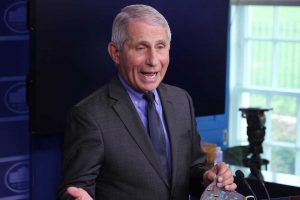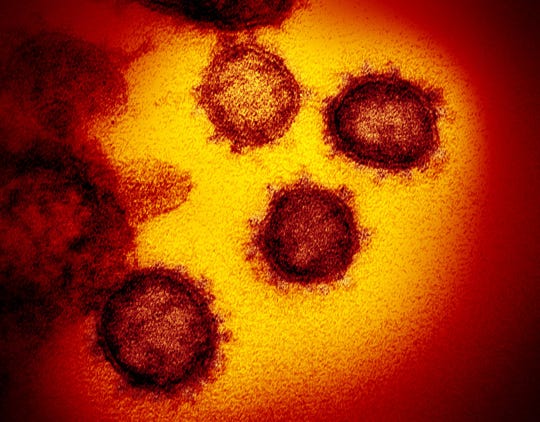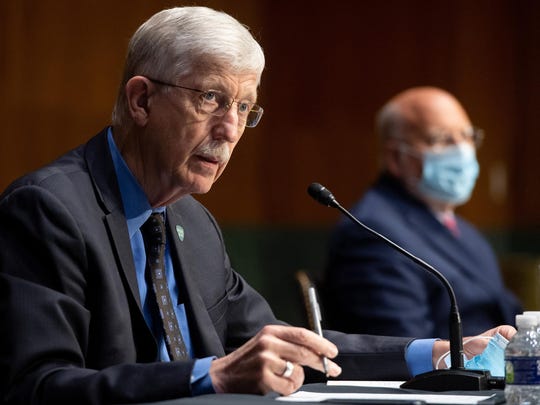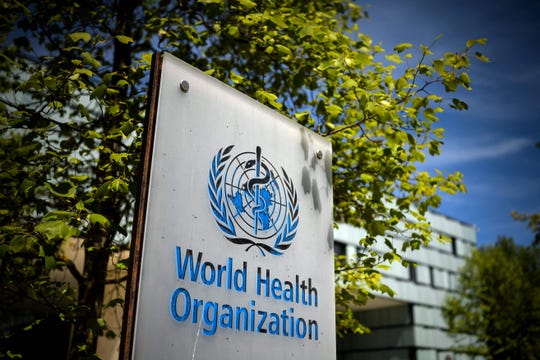‘I remember it very well’: Dr. Fauci describes a secret 2020 meeting to talk about COVID origins

In the early days of the growing coronavirus outbreak that would soon become a pandemic, an elite group of international scientists gathered on a conference call to discuss a shocking possibility: The virus looked like it might have been engineered in a laboratory.
“I remember it very well,” Dr. Anthony Fauci, the top infectious disease expert at the National Institutes of Health, said in an interview with me on Wednesday. “We decided on the call the situation really needed to be looked into carefully.”
The teleconference on Feb. 1, 2020, appears to have played a pivotal role in shaping the early views of several key scientists whose published papers and public statements contributed to the shutting down of legitimate discussion about whether a laboratory in Wuhan, China, might have ignited the COVID-19 pandemic.
As a reporter who has spent a decade revealing hundreds of serious safety breaches at U.S. biological research labs, it has always seemed obvious to investigate whether the Wuhan Institute of Virology, a major coronavirus research center, possibly played a role given that the initial outbreak happened in the same city.
Yet for more than a year, those who publicly raised such questions were too often deemed a crackpot conspiracy theorist or a simpleton who just didn’t understand science.
It has only been in recent weeks that a growing list of high-profile scientists, intelligence officials and politicians – including President Joe Biden – have publicly acknowledged the plausibility of a lab accident and pushed for rigorous investigation.
Could an accident have caused COVID-19?: Why the Wuhan lab-leak theory shouldn’t be dismissed
Perhaps that’s because the early concerns among key scientists – like the conference call on Feb. 1, 2020 – were kept private until now. That call likely would have remained secret if not for documents released under the Freedom of Information Act.
A secret, high-stakes conference call
That teleconference was urgent enough it was scheduled on a Saturday afternoon.
Just two days earlier, the World Health Organization had raised the alert level on the novel coronavirus, declaring the growing outbreak a public health emergency of international concern. At the time, most Americans were still going about life as usual, blissfully unaware of what was to come, even though federal health officials had recently identified a man who had traveled from Wuhan to Washington state as the first case in this country.
Aerial view of the P4 laboratory at the Wuhan Institute of Virology in Wuhan in China's central Hubei province on April 17, 2020. (Photo: HECTOR RETAMAL, AFP via Getty Images)
Precious little was known back then about the virus, which was assumed to have emerged in the usual way by an infected animal, or a series of animals, infecting a person. The suggestion that it might have hallmarks of genetic engineering had enormous implications, if that turned out to be true.
The group of scientists invited to the call had agreed in advance that the information they discussed would be kept in total confidence and not shared until they had agreed on next steps, emails at the time show. They were among thousands of pages of Fauci’s emails on a wide range of topics that BuzzFeed News posted online recently after obtaining them through the federal Freedom of Information Act lawsuit.
Public vs. private: Compare what Dr. Fauci said in his emails to what he said publicly
A day before the teleconference, Kristian Andersen, an expert in infectious disease genomics at the prestigious Scripps Research Translational Institute in California, had told Fauci first by phone and again later by email that the genetic structure of the virus looked like it might have been engineered in a lab.
“The unusual features of the virus make up a really small part of the genome (<0.1%) so one has to look really closely at all the sequences to see that some of the features (potentially) look engineered,” Andersen said in an email to Fauci on Jan. 31, 2020. Andersen added that he and University of Sydney virologist and evolutionary biologist Edward Holmes, plus a handful of other top scientists with whom Fauci was on a first-name basis, “all find the genome inconsistent with expectations from evolutionary theory.”
An image from an electron microscope shows SARS-CoV-2, the virus that causes COVID-19.
More work needed to be done, “so those opinions could still change,” Andersen said in the email exchange.
Andersen did not respond to repeated interview requests since last week. Late Thursday, a spokesperson said Andersen was traveling and unavailable.
Discussion of Andersen’s concerns had begun earlier on that Friday, Jan. 31, 2020, Fauci told me, when he had conferenced Andersen into a three-way call with Jeremy Farrar, director the Wellcome Trust, an influential and wealthy foundation based in London that funds global health research.
It was during that first call, Fauci said, that Andersen mentioned he had spoken with Holmes and that “at first glance,” the genome of the virus looked unusual.
“I suggested we bring together a multidisciplinary team,” Fauci said, adding that he wanted it to be an international group with wide expertise to ensure as many opinions as possible.
“We agreed to convene by phone the next day,” Fauci told me, adding that he notified senior leaders at the NIH’s parent agency, the Department of Health and Human Services, of the meeting. Then he called his boss, NIH Director Francis Collins, and brought him into the discussion.
Dr. Francis Collins, left, director of the National Institutes of Health, and Dr. Robert Redfield, then the director of the Centers for Disease Control and Prevention, testify in 2020 on Capitol Hill. (Photo: SAUL LOEB/POOL/GETTY IMAGES/TNS)
Those on the call that Saturday, Fauci said, included Collins, Farrar and Andersen, plus several other international experts on emerging infectious diseases and virology.
Emails show the agenda for the one-hour meeting was short: Farrar was responsible for kicking off the meeting with: “Introduction, focus and desired outcomes.” Andersen came next, charged with providing: “Summary.” Holmes spoke third: “Comments.” Then the floor was opened for Q&A.
But details of what was said in the meeting, including extensive notes taken by one participant and further thoughts shared by others, were blacked out by the NIH before the emails were made public.
“It was a very productive back-and-forth conversation where some on the call felt it could possibly be an engineered virus,” Fauci said in our interview. Others, he said, felt the evidence was “heavily weighted” toward the virus emerging from an animal host.
Fauci said his role in helping to organize the meeting shows he has always been open to the possibility of a lab leak or an engineered virus. “I always had an open mind,” he said, “even though I felt then, and still do, the most likely origin was in an animal host.”
At the end of the call that winter Saturday in 2020, Fauci said, it was decided that Farrar would “give a heads up” to WHO Director-General Tedros Adhanom Ghebreyesus “and determine what further needed to be done.” Fauci said he doesn’t know whether Farrar reached Tedros.
World Health Organization headquarters in Geneva, Switzerland, on May 8, 2021. (Photo: Fabrice Coffrini/AFP via Getty Images)
Farrar was unavailable for an interview, a spokesperson said. Holmes and Tedros did not respond to requests for comment.
Meanwhile, Fauci said, Andersen was planning to devote considerable time in the ensuing two or three weeks taking a closer look at the genetic sequences.
A change in position in three days
Yet just three days after that Feb. 1 meeting, Andersen’s position on the virus’ potential origin changed dramatically. He had gone from having concerns about possible genetic engineering to telling another group of scientists “the data conclusively show” the virus wasn’t engineered, and calling suggestions of engineering “fringe” and “crackpot” theories.
Andersen gave this feedback in a Feb. 4, 2020, email to several scientists who were helping craft a letter about the new virus for the National Academies of Sciences, Engineering, and Medicine to send to the White House Office of Science and Technology Policy. The email was obtained by the nonprofit group U.S. Right to Know through a public records request last year.
“Reading through the letter I think it’s great,” Andersen wrote to the group, “but I do wonder if we need to be more firm on the question of engineering. The main crackpot theories going around at the moment relate to this virus being somehow engineered with intent and that is demonstrably not the case. Engineering can mean many things and could be done for either basic research or nefarious reasons, but the data conclusively show that neither was done…”
He added: “If one of the main purposes of this document is to counter those fringe theories, I think it’s very important that we do so strongly and in plain language (‘consistent with’ [natural evolution] is a favorite of mine when talking to scientists, but not when talking to the public – especially conspiracy theorists).”
Source: Read Full Article



